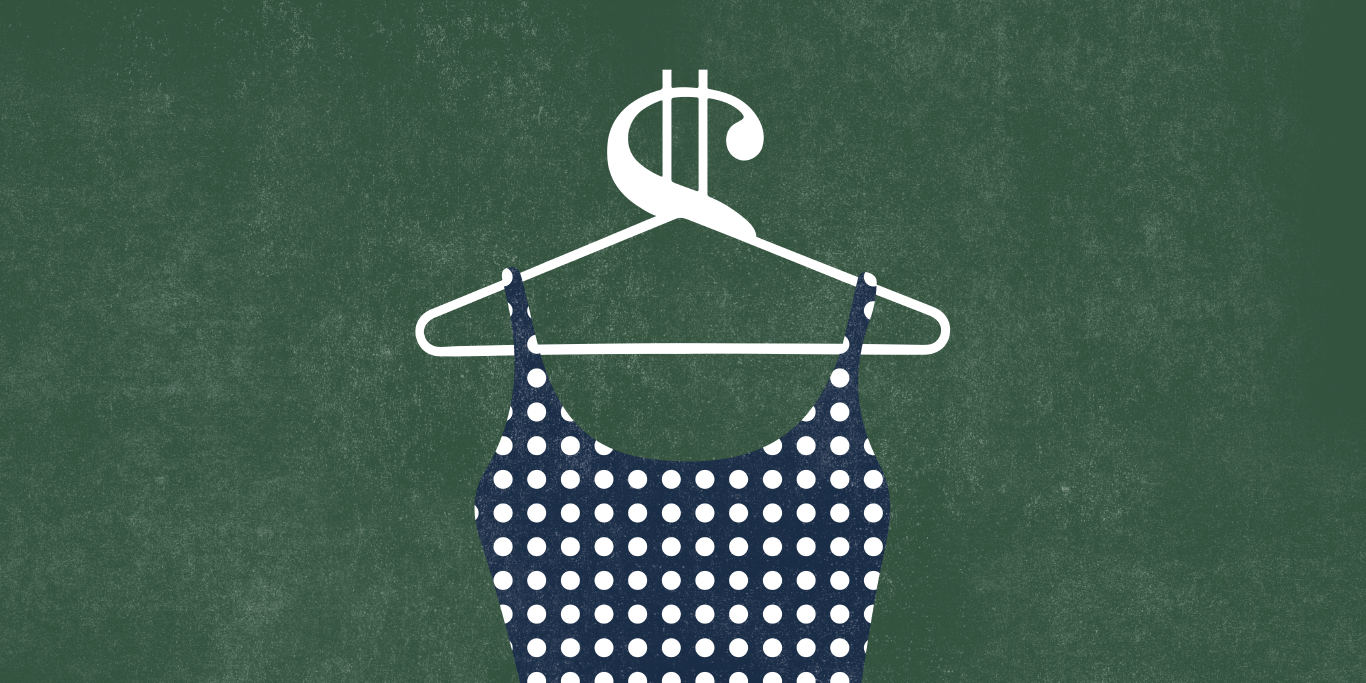In the mid-19th century, Charles Frederick Worth created haute couture, the highest level of fashion, which emphasized the merits of clothing beyond mere utility. Designers had to couple knowledge of dressmaking with a mind for innovative styles. In 1945, the industry codified a set of standards to define the requirements for the haute couture label. The minimum staff size of 15 full-time staff members and 20 full-time technical employees and the demand for two shows a year with at least 50 pieces each significantly limits the number of designers who are able to produce haute couture, even in today’s increasingly mechanized fashion industry (consider that one dress, created by hand, can take hundreds of hours to complete). Some of the biggest names will be recognizable to most: Chanel, Christian Dior, Givenchy, Armani, Versace, and more.
Though small in number, haute couture shows, and fashion week shows in general, are monstrous occasions. They draw all manner of celebrities, hundreds of models, and significant media attention. Beyond these are cruise shows, where fashion houses design collections for a specific setting and display them there, such as Dior’s show in Morocco this past April. In addition to the usual production logistics, this cruise show had the added requirements of transporting everything to the staging area, collaborating on pieces with designers from all over Africa and, of course, flying there in a private jet. The lengths to which designers go to showcase their work makes for a striking spectacle, but is it one we can still justify?
The fashion industry, and its calendar of showcases in particular, draw as many ethical issues as they do column inches. Clothing retailers create an extraordinary amount of waste, and most people own far more clothes than they actually need. Displaying biannual collections requires a veritable army of models. Furthermore, the modeling industry can encourage a host of mental and physical illnesses in those aspiring to be just a bit thinner, whiter, or better-looking, and the shows’ demand for models feeds into this cycle. While there have been sporadic attempts to include a natural range of body types, there has been no lasting paradigm shift in the field.
Sometimes it appears as though the whole occasion revolves more around the people wearing the clothes than the creations themselves. Legendary fashion photographer Bill Cunnigham wrote, “The difference for me is I don’t see the people I photograph. All I see are clothes.” But when designers fail to create looks that push boundaries, they run the risk of relying on models’ bodies instead of the artistic value of their own clothes to define beauty. When the fashion feels devoid of purpose, of any effort to address political or social causes, it becomes difficult to justify all the harms that accompany it.
Clothes have become boring because many designers at the supposed highest level of fashion are afraid of raising uncomfortable questions or themes. Not that the lackluster dresses lack wealthy buyers. Dresses that begin at $10,000 and extend into the millions create a tiny, exclusive sliver of the population that gets to enjoy the creations. Kevin Kwan, author of the popular Crazy Rich Asians series, spent fashion week in Paris with six notable Asian women who are repeat buyers of haute couture. He put the number of buyers at around 2,000 in the world. The highest level of fashion is closed off to essentially the entire population, save for the connected and ultra-wealthy.
These opulent displays cater to a select few—one woman said, “It’s actually like buying art. It is wearable art, and if you can put it on yourself, why not?” To answer: because these collections harm the environment, create a modeling market with a propensity to misuse its participants, and, recently, fail to push culture forward in any meaningful way.
But if we can consider haute couture art, as some of its buyers do, it may be judged by a different standard, one less focused on the commercial value. For all the attention they garner, haute couture shows actually lose money in most cases. Designing exclusive pieces for private clients, even with extravagant price tags, is too costly to justify the business model. Instead, these fashion weeks and shows provide media attention and are used primarily as a marketing tool to sell wider margin items: handbags, perfume, undergarments, etc. Perhaps separating the business side entirely, or at least as much as possible, from the art is the most sustainable way forward.
The Metropolitan Museum of Art produced a book in 1995 for its showing of some of the finest examples of high fashion, and it notes, “The couture’s offering of distinction in design and technique remains a compelling force, one even more potent when much other quality has atrophied.” Unfortunately, haute couture no longer benefits from the same clear advantage in vision, such as the kind on display when that book was written. 1995 saw fashion pioneer Alexander “Lee” McQueen’s incredibly controversial “Highland Rape” show. At the time, he was slammed in the press for alleged misogyny and objectification, but in many circles now, his shows are held up as an example of what daring couture can be. And his appeal was not limited to shock-value because McQueen was also an impeccable craftsman, having begun his career as a tailor at Savile Row. McQueen’s show was overtly political and visually shocking. The risk he took was once a cautionary tale, but now it stands as an example of what the fashion industry has lost.
German philosopher Walter Benjamin also lauded the merits of fashion as a reflection of our times, or even a predictor of those to come. In The Arcades Project (1940), he wrote, “Each season brings, in its newest creations, various secret signals of things to come. Whoever understands how to read these semaphores would know in advance not only about new currents in the arts but also about new legal codes, wars, and revolutions.” While some of this may be exaggerated, the point that fashion can be political, can be advocacy, can be opinionated, holds true. Some smaller labels have made forays into this territory. Stella McCartney, for instance, showed a collection in Paris in 2018 that put a premium on ethical practice: no fur, no skin and stitching instead of glue. (https://canablue.com/) Even the invitation read, “I am 100% compostable (and so are you!).” It’s time these values were reflected in the highest echelon as well.
High fashion sits in a unique position to be a leader in culture as it was at its genesis. Given its place of pop culture prominence, it has an obligation to acknowledge the problems it is liable to create: gender, environmental issues, body image, classism, and more. It does not make practical sense for a fashion house to strictly become a political commentator and neglect any kind of brand-building, but these shows don’t make money anyway. And a brand gains more respect, and probably more interest, if it is known for being a leader on gripping issues and in visual culture instead of an indulgence for a small class of social and financial elite.
The barriers between the two must be taken down. Fashion should mirror our times, and it can do that with a reinvention of its values, with an eye to the cultural and the artistic, rather than the commercial. Friedman commented on this with respect to the Milan show. “That’s what has been missing from Milan most of the week: that kind of ambition, that kind of willingness to take risks. So you stumble. So what? That’s how we fall into the future. And when we do, we need something to wear.”
Image Credit: Sean Ye, Neha Malik





